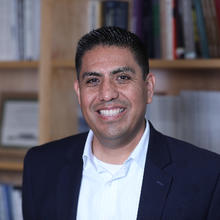Sustainable Fuels Initiative

About SFI
The Sustainable Fuels Initiative (SFI) at CE-CERT leads research and development in low-carbon, renewable energy systems. The group focuses on clean fuels such as hydrogen and renewable natural gas (RNG), along with the technologies, infrastructure, and policy frameworks necessary for widespread deployment. SFI combines experimental research with systems-level analysis to evaluate the technical, economic, and environmental performance of emerging fuel pathways. Core competencies include energy systems modeling, life cycle assessment, and techno-economic analysis. Research focus areas include:
-
Sustainable Fuels Production Technologies
SFI investigates thermochemical, biological, and power-to-gas methods for producing sustainable fuels. Current work emphasizes renewable hydrogen and RNG production from waste-based and renewable feedstocks. In addition to advancing conversion technologies, the team addresses resource availability, collection logistics, production scalability, and commercialization potential. This research supports the development of practical solutions for integrating low-carbon fuels into transportation and power sectors.
-
Clean Energy Deployment Pathways
To accelerate adoption of sustainable fuel technologies, SFI conducts research on the technical and policy barriers that hinder deployment. The group performs experimental and modeling work to evaluate infrastructure readiness, technology performance, and regulatory frameworks. Their work supports strategic planning for zero-emission vehicle infrastructure, long-term emissions reduction, electric grid compatibility, and effective policy implementation. This research informs decisions at local, state, and national levels.
-
Energy Systems Analysis
SFI performs comprehensive analysis of energy systems to quantify the environmental and economic impacts of renewable fuel pathways. Using life cycle and techno-economic assessment frameworks, the team evaluates the sustainability and cost-effectiveness of new technologies across their full production and use cycles. Systems modeling is also used to project grid performance under high-renewables scenarios and assess long-term impacts of different policy approaches. This integrated approach supports data-driven planning and investment in clean energy solutions.
Research Projects
-
Hydrogen Impacts Study
Principal Investigator Arun Raju Co-Principal Investigator Alfredo Martinez-Morales Project Sponsor California Public Utilities Commission Project Period April 2020 - September 2021 Overview
This project is aimed at assessing safety and performance concerns associated with injecting hydrogen into the existing natural gas pipeline infrastructure. Experimental and modeling work is ongoing on leakage rates, impacts on durability and integrity of the pipeline system and components, and hydrogen-driven embrittlement.
Project Abstract
The University of California, Riverside, College of Engineering, Center for Environmental Research and Technology is providing the California Public Utilities Commission with a Hydrogen Blending Impacts Study. The study will provide CPUC with detailed research and findings of assessing safety concerns associated with injecting hydrogen into the existing natural gas pipeline system at various percentages in compliance with Senate Bill 1369 and CPUC Rulemaking 13-02-008. Senate Bi11 1369 requires CPUC to undertake specified actions to advance the state’s clean energy and pollution reduction objectives, including, where feasible, cost effective, and consistent with other state policy objectives and the green electrolytic hydrogen is targeted for increased use. UCR, and the subcontractor, Gas Technology Institute (GTI), are conducting experimental and modeling work on the following topics:
- Recommended maximum hydrogen percentage at which no or minor modifications are needed for natural gas infrastructure and end-use systems, and an assessment of the types of modifications that may be required for higher percentages of hydrogen.
- Assessment of the impacts, including degradation, on durability of the existing natural gas pipeline system.
- Assessment of any impact on natural gas pipeline leakage rates. Assessment of any impact on valves, fittings, materials, and welds due to hydrogen embrittlement.
-
Syngas Methanation
Investigator Arun Raju Project Sponsor Taylor Energy Project Period April 2019 - March 2021 Overview
SFI is developing new catalytic pathways for RNG production from gasification derived syngas. Syngas produced using the novel Taylor Energy waste gasification process is used as the feedstock for methanation.
Project Abstract
UCR is designing the catalyst for the methanation reaction and work with the catalyst supplier on synthesis and supply of the desired catalyst. The goal is to evaluate potential options for the methanation catalyst and to design catalyst configurations and assist in synthesis, testing and optimization. UCR’s role is to perform material and energy balances, and life cycle and economic analysis of the proposed system and identify optimal process parameters that result in minimal carbon intensity of products. The parameters that are calculated in the life cycle analysis (LCA) include: (1) total and fossil energy used per unit of energy produced and per mile driven; (2) life cycle GHG emissions; and (3) life cycle criteria and toxic pollutant emissions. The team will particularly focus on emission reductions specific to disadvantaged and low-income communities.
-
CO2 Enhancement of Anaerobic Digestion
Investigator Arun Raju Project Sponsor Southern California Gas Company Project Period 06/01/2018-12/31/2019 Overview
This project will demonstrate a novel technology developed by Perlemax that can double methane production rates of anaerobic digesters using CO2 microbubbles. The demonstration will be conducted in a digester at the City of Riverside Water Quality Control Plant.
Project Abstract
Introducing microbubbles of pure carbon dioxide (CO2) in anaerobic digestion appears to double the rate of methane (CH4) production. Doubling the rate of CH4 production, and perhaps increasing the mass of converted solids, has the potential to substantially, positively impact the economics of ambient temperature anaerobic digestion (ATAD) as a renewable fuel source. Additionally, this has the potential to make ATAD competitive with, or contribute to a better “clean-up” process for fermentation and hydrothermal liquefaction of wet biomass. The objective of this project is to demonstrate the CO2 microbubble enhancement of CH4 production during Anaerobic Digestion at scales necessary for commercial development. The project involves process design and testing and optimization for digestion of sewage sludge (biosolids) and other feedstocks at temperatures between 10 to 37ºC.
-
Reducing Emissions from the Heavy-Duty Transportation Sector
Investigator Arun Raju Project Sponsor SoCalGas Project Period January 2019 - December 2020 Overview
This project evaluates NOx and greenhouse gas (GHG) emissions trends of the Heavy-Duty (HD) transportation sector in California’s South Coast region under future scenarios. Modeling analysis using original vehicle population projections and real-world NOx emission factors are used to estimate emissions over the 2020 to 2040 timeframe.
Abstract Summary
The objective of this study is to identify the challenges and opportunities presented in the HD transportation sector, consisting Medium-Heavy-Duty (MHD) and Heavy-Heavy-Duty (HHD) vehicles, for meeting California’s fundamental air quality, climate, energy, and environmental equity objectives. In addition, we evaluate select pathway scenarios towards achieving major policy targets. For the purposes of this report, a ZEV is defined as a vehicle that does not produce tailpipe emissions of pollutants and an NZEV is defined as a vehicle that produces 0.02 g-NOx/bhp-hr or lower tailpipe NOx emissions. Battery Electric Vehicles (BEV) and Fuel Cell Electric Vehicles (FCEV) are included in the ZEV category while Natural Gas Vehicles (NGV) that meet the tailpipe NOx emission criteria are considered to be NZEVs. In particular, this report analyses how many tons of key pollutant emissions can be reduced from HD diesel trucks with a ZE approach compared to a combined NZE and ZE approach. The report also assesses which technology pathways achieve the greatest reductions in NOx and GHGs in the years 2025, 2030 and 2045. NOx and GHGs are selected as key pollutants to evaluate because of the prominent role they play in achieving all three of California’s fundamental policy objectives.
-
Lithium Extraction
Principal Investigator Arun Raju Co-Principal Investigator Alfredo Martinez-Morales, Wilfred Elders Project Sponsor Berkshire Hathaway Project Period 06/01/2020-06/30/2023 Overview
UCR is conducting a Life Cycle Assessment and will assist with process evaluation of an on-site pilot scale demonstration of lithium extraction from geothermal brine from the Salton Sea geothermal field by CalEnergy.
Project Abstract
The purpose of this Agreement is to fund, design, build, and operate an integrated, pre-commercial geothermal brine pre-treatment and lithium recovery system at an existing geothermal power plant in Calipatria, California. The system will demonstrate cost-effective lithium recovery with minimal environmental footprint. Commercially viable recovery of lithium from geothermal brine resources represents a significant technological and financial challenge, but also a tremendous opportunity for California. Even the best sources of brine in the world comprise only 0.1% lithium, with the remaining 99.9% composed of low-value elements, such as sodium, magnesium, and calcium. Traditional lithium recovery from brine resources relies on inefficient and environmentally disastrous evaporation ponds. These evaporation ponds make financial sense only for a few, anomalously high-quality brine resources in South America. As a result, there has been only one new lithium brine project in the past 25 years, despite soaring lithium demand and prices. Effective and environmentally friendly approaches to lithium recovery from brine have not yet been commercialized. The project will deploy a cost-effective process to extract lithium from Salton Sea geothermal brine, while minimizing environmental impact. The proposed project, if successful, will lead to the largest and most environmentally friendly lithium mining opportunity in the world. Moreover, it will lead to the only lithium brine production of significant scale that will not require environmentally harmful evaporation ponds. The system will rely on a modular technology that will enable lithium producers to optimize capital and operating costs, accelerate project startup, and unlock significant new lithium resources, while greatly minimizing environmental burdens and supporting sustainable lithium recovery. UCR will assist the lead applicant, Berkshire Hathaway Energy Renewables, in developing a Measurement & Verification plan for the project, conducting a Techno-Economic Analysis of the overall system, and conduct Knowledge/Technology Transfer activities.


